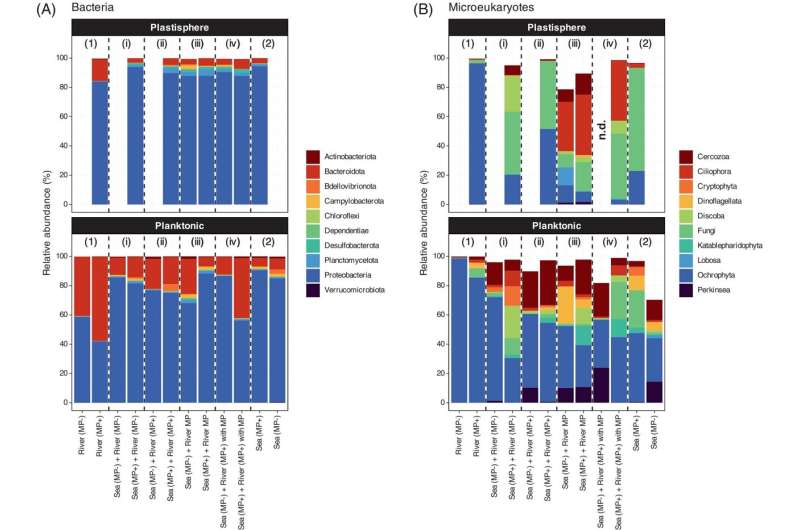This article has been reviewed according to Science X's editorial process and policies. Editors have highlighted the following attributes while ensuring the content's credibility:
fact-checked
peer-reviewed publication
trusted source
proofread
Study finds microbes hitchhike on microplastics to reach the sea

The oceans contain large amounts of microplastics, particles that are less than 5 mm in size. In parts of the Baltic Sea, the concentration of microplastics can be as much as 3,300 particles per cubic meter. The microplastics end up in aquatic environments through industrial or domestic sewage and littering. Because they are difficult to degrade, they can be persistent in the ecosystem and affect many aquatic organisms.
A large proportion of microplastics in the oceans have been washed out via rivers and other waterways. These microplastics are also accompanied by the microorganisms that grow on the surface of the particles. But the composition of microorganisms differs between freshwater and seawater. The fact that the microorganisms "hitchhike" with the plastic particles means that many microorganisms from the freshwater follow the small particles into the sea. Will this affect the composition of microorganisms in the marine environment?
To find out, a group of researchers at Umeå University has experimented with moving plastic particles between freshwater and seawater, and with the help of DNA technology, studied the composition of species in the different environments. The study was conducted with waters from the northern part of the Baltic Sea and one of its river inflows.
The results of the study, published in Environmental Microbiology, indicate that the microorganisms that live in the marine environment have a resistance to change and compete with the freshwater species that have hitchhiked with the microplastics into the sea. The plastic particles become overgrown by the marine species instead, and the composition of species in the coastal environment does not seem to change despite the large number of freshwater species that hitchhiked with the plastic particles.
More information: Máté Vass et al, Microbial hitchhikers on microplastics: The exchange of aquatic microbes across distinct aquatic habitats, Environmental Microbiology (2024). DOI: 10.1111/1462-2920.16618
Journal information: Environmental Microbiology
Provided by Umea University


















